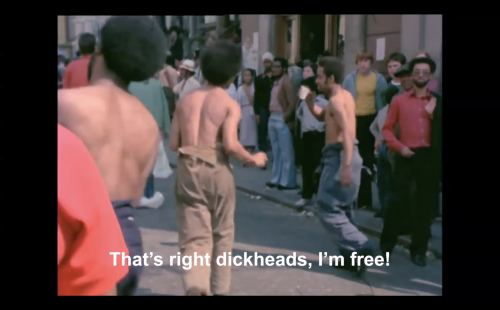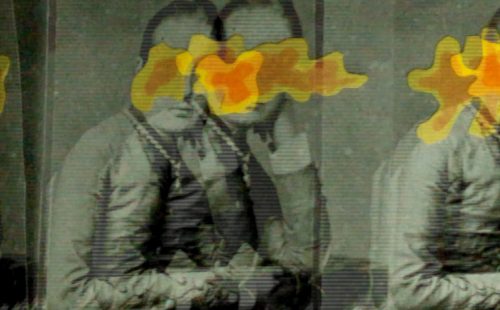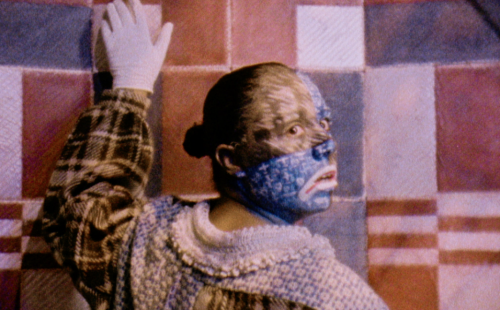Both Sides Now 7: DeNatured explores how artists are interpreting different forms of environment, from real to virtual to the spaces in between. It attempts to reconsider the evolving notion of environments and (meta)universes, via recent work by artists and filmmakers.
Through Both Sides Now 7, we examine how artists are disrupting, commenting upon, and engaging with virtual worlds, environmentalism, and the coming metaverse.
The programme is the seventh edition of a long-term project that proposes re-readings of artists’ moving image from China, the UK and beyond. In this new edition, videoclub (UK) and Videotage (HK) bring together international artists from the fields of film & video with screenings in the UK and Hong Kong between May and June 2022.
Read the full curatorial text for the programme by downloading the file here: BOTH SIDES NOW 7 CURATORIAL TEXT.
PROGRAMME NOTES AND FILMS
AL and AL, Hard Drive (A:), 2004
Hard Drive (A : ) simulates an inertial journey through the world wide web. Following a Nuclear War, the only remains of Homosapien are memories stored in the cloud on hard drives in former nuclear bunkers. A sentient machine discovers thirty percent of internet searches were for naked bodies playing with one another. In this coded space, erotic contact must have become an onanistic hallucination and before the human body disappeared from the earth it was captured in a mental universe of mediated masks.
AL and AL biography
AL and AL met in Derek Jarman’s Garden in Dungeness. They studied together at Central St Martins School of Art in London, where they pioneered their performance based computer-generated filmmaking practice, before going on to exhibit their videos internationally in festivals, galleries, site-specific installations and screenings. Most recently, the duo have created the second chapter in their epic black hole space opera in collaboration with American composer Philip Glass and physicist Professor Brian Greene which has performed in 30 concert halls around the World. AL and AL are currently developing their debut feature film with the BFI and directing a £30m restoration of Haigh Hall, transforming the space into a national visitor destination for the arts.
Astrid Feringa and Jean Baptiste Castel, This is not the Amazon, 2019
Is representation of nature through media and entertainment more real to us than nature itself? “This is not the Amazon” is a video essay that investigates how the concept of wilderness is constructed through different perspectives and economies, simulated over and over again into a simulacrum — an image that may never have existed in the first place.
Artists’ biographies
Astrid Feringa is an artistic researcher and filmmaker based in-between Arnhem (NL) and Reykjavik (IS). Through her work, she mainly investigates the ways in which structural design of online platforms, digital technologies and mechanisms of distribution and documentation are used to create and reenforce social-political power structures. Additionally, she also works as lecturer at ArtEZ University of the Arts (NL)
Jean-Baptiste Castel is a multidisciplinary designer born and raised in France, based in Amsterdam. He explores the use of software in contemporary culture by making short videos and animations. His work investigates themes such as illusion, time, materiality, perspective, and infinity, bringing impossible spaces into material dimensions by means of computer-generated images (CGI).
Danni Zheng, Mineral Wasteland, 2021
‘Mineral Wasteland’ focuses on negative impacts of technological development on the natural environment, and also depicts a post-human age wasteland in which digital entities will still exist on the earth but integrate with nature. It will carry the memory of consumerism, modernism and capitalism in the present Anthropocene.
Consumerism and planned obsolescence are prevalent in our high-speed society. At the end of 2020, human-made stuff outweighed all life on earth. Advances in technology are actually the consumption of natural resources, however, recycling activities are unable to keep pace with the growth of e-waste. From raw mineral mining, manufacturing, shipping and then to recycling, all processes generate toxic chemicals. They oxidise, corrode and cause acid rain. The cycle repeats itself and generates new chemical compounds, such as sulphur oxides and nitrogen oxides, and acid rain again. Finally, they will evaporate, forming the crystals and mineral wasteland.
Artist’s biography
Danni Zheng (b. 1997, Liaoning, China) is a new media artist with a spatial design background, currently based in London. Her work recently explored the relationship between physical and virtual space through investigating the status quo and speculating the future in a digital way, such as through 3D animation, immersive experiences, live performances and creative coding. She has also collaborated with sound artists, engineers, composers, and illustrators during her artistic creation. Her works have been presented at Dyson Gallery (London), Menier Gallery (London) and Samsung KX (London).
Alex May, A Kolkata, 2021
A Kolkata is a video artwork realised within the framework of the Indo-European Residency Project Kolkata 2021, supported by EUNIC – European Union National Institutes for Culture in collaboration with the British Council, Kolkata.
The work is a reflection on the experience and role of travel from the perspective of being locked down due to the pandemic. If we are to curb our travel to reduce our carbon impact on the world, do we need to redefine our idea of having visited a place being entirely a physical act.
Due to the pandemic, the entire residency took place online, with one selected artist from France, Germany, Italy, India, and the UK exploring the city of Kolkata virtually via a curated collection of materials and online events.
During the residency, Alex collaborated with four Kolkata based photographers to capture physical elements of Kolkata as 3d models. Following a workshop that introduced the technique, each photographer was asked to go out and select objects that act as personal markers for how they navigate the city. By taking a number of 2d photographs of each object from different angles, Alex was then able to recreate these objects in 3d using photogrammetry software.
These disparate objects were then digitally combined into a visual poem that reflects on what it means to have been to a place. Partially inspired by an intense lucid dream of walking through Kolkata that Alex had during the residency, the work is a deeply personal exploration of the idea of a city never visited.
Video and soundtrack by Alex May.
Made in collaboration with:
Neel Bhattacharjee
Bappaditya Dasgupta
Ritaban Ghosh
Rohan Mukherjee
Artist biography
Alex May (b. 1972) is a British contemporary artist questioning how our individual and collective experiences of time, and formation of memories and cultural record, are mediated, expanded, and directed by contemporary technologies. His work forges creative links between art, science, and technology through a wide range of digital new media, including virtual and augmented reality, photogrammetry, algorithmic photography, interactive robotic artworks, video projection mapping, generative works, performance, and video and sound art.
His international exhibition profile includes Ars Electronica, LABoral (Spain), IMPAKT (Netherlands), FACT (Liverpool), Furtherfield (London), WRO Media Art Bienalle (Poland), HeK (Basel), The Francis Crick Institute, Bletchley Park, Eden Project, Science Gallery in Dublin (Ireland) and Bengaluru (India), ZHI Art Museum (China), and the Beall Center for Art + Technology, University of California, Irvine.
He gives talks about many aspects of digital art, art/science collaboration, digital preservation, and public engagement with social robotics through art (UCLA, USC, School of Visual Arts (SVA) New York, University of Boulder, SUNY, TEDx Bucharest, Chelsea College of Art (in conversation with curator Robert Storr), Waag Society in Amsterdam) and runs workshops for artists using his own software (UCLA, for Fluxmedia at Concordia University in Montreal, International Symposium on Electronic Art (ISEA) in Istanbul), and gave the 2012 Christmas lecture for the Computer Arts Society.
Alex is a Visiting Research Fellow: Artist in Residence with the computer science department of University of Hertfordshire since 2011, and a Digital Media Arts MA sessional lecturer at the University of Brighton since 2012, and the University of Hertfordshire since 2019.
He is the Head of Projective Geometry at The Institute of Unnecessary Research.
LIN Tzu-Huan, Online Funeral Service I – Tamara, 2015
Tzu-Huan Lin is an artist based in Brooklyn, New York. An alumnus of the Pratt Institute, Lin’s art primarily focuses on narrative film and immersive installation, exploring different facets of art and issues about the digital age by working with issues that deal with various occurrences. Mythology, history, scientific theories, pseudo-documentary films, and experimental films are some contents dealt with in Lin’s artworks and also the approaches he employs. Through his interpretations of certain issues, he uses diverging narratives to dive into the themes being examined and to shape the artworks created. He also creates spatial installations to enhance the way the audience experiences his way of seeing the world.
Artist biography
Online Funeral Service I- TAMARA: is a fiction story about remembering dead people in the digital era. Appropriate from Italo Calvino’s Invisible City, the plot took place on the Internet. The video begins with a man telling his abstract story. The narrator serves as a medium to channel different characters and stories. The narration travels through multiple imaginary cities, turning the inside to the outside, life to death, and narrative to non-narrative. Who is telling the story, a traveler, a bard, a king, or a soul trapped on the Internet? The truth revealed as the story unfolds.
Footages have been distorted and represented as a new meaning provoking the next cut. I explored the mass reproduction culture by providing these found footage of second life. Then an online funeral service becomes the agent to channel these dead souls(footages) into the online world again. Online funeral service is to dedicate your loved ones and keep them alive and trap them in a fixed form eternally.
JUAN Poyuan, It was just a virtual kiss, 2020
The story of love that takes place in the online game World of Warcraft is turned into the raw material to explain how players of online games construct their own virtual bodies in the digital world and how their bodies are extended in digital form, thus turning a game into a medium to touch, embrace, and kiss each other through different fantasy races of doubles. By crossing to the other side of the screen, visuality enables the character one plays to entail the illusion of bodily and physical connection with other characters, whether as affect or constraints, thus overcoming the limitation of our real body. It is a new sense of body constructed digitally, and much of it through machine-made movies and computer-realistic animation.
The game world as such purports to link digital haptic perception with actual bodily movement, allowing free traverses across the real world and what is on the other side of the screen. Being in the gameworld, many new questions emerge: are there other possible ways whereby our body exists? How far is media expandability really overcoming the physical limitation of our body? Would a new spirit emerge from these new digital bodies? Are we anticipating new affective connections and new romance?
Artist’s biography
Juan Poyuan, an artist, gamer, and Internet addict, takes digital archaeology as the core concept of his creative process and has been focusing on digital games and online spaces for a long time. With the works of Ruan Baiyuan as an important source of creation, Juan combines online games, online communities, machine-made videos, game engines, 3D software, history, memory, aesthetics, and technical characteristics to create a new, contemporary visual experience, technical thinking, sculpture, video and other ways of viewing, presenting new perspectives and ways of thinking to reflect on and question the meta-set-up behind this post-Internet era.
HU Rui, Soon It Will Be Deep Enough, 2019
In “Soon It Will Be Deep Enough”, a group of people are having a pool party inside an airplane while the water level is slowly rising up. It was made while being confronted by a large wildfire in Los Angeles, a city with a strong pool party scene. Initially conceived as a reflection on the global climate crisis, it may accidentally correspond to many other critical situations we find ourselves in today.
Artist biography
HU Rui (b.1990) currently lives and works in Hong Kong, Shanghai, and Guangzhou. His practice and research focuses on the issues of time, memory, expectation, and decision-making from a multitude of perspectives and through a variety of media and technologies, including moving image, installation, and video game. His work has been featured by Artforum, 艺术论坛 (Artforum China), Ocula, etc. He has participated in exhibitions and screenings at art spaces, institutions, and film festivals internationally, including the International Film Festival Rotterdam, UCCA Center for Contemporary Art, International Symposium on Electronic Art (ISEA), Ann Arbor Film Festival, ifva Festival at the Hong Kong Arts Centre, Vienna Shorts Film Festival, LOOP Barcelona, among others. He holds an MFA in media arts from the University of California, Los Angeles and a BFA in film from New York University, and is currently an Assistant Professor of Practice in Computational Media and Arts at the Hong Kong University of Science and Technology (Guangzhou).
Lawrence Lek, SoMA (Extract from AIDOL, 2019), 2019
SoMA (School of Machine Art) is an extract from Lawrence Lek’s first feature-length film, AIDOL 爱道, a CGI science fiction musical that forms the sequel to his acclaimed film Geomancer (2017). Deploying 3D rendering and video gaming software, AIDOL tells the story of Diva – a fading superstar preparing for a comeback performance at the 2065 ‘eSports Olympics’ – and Geo, an AI with artistic yearnings.
Set in a smoke-and-mirrors realm of fantastical architecture, sentient drones and snow-deluged jungles, AIDOL revolves around the long and complex struggle between humanity and Artificial Intelligence. Fame – in all its allure and emptiness – is set against the bigger contradictions of a post-AI world, a world where originality is sometimes no more than an algorithmic trick and where machines have the capacity for love and suffering. Contemporary anxieties and fixations – the rise of AI, the formulaic dictates of celebrity, the hegemony of technological giants – are refracted through a quixotic prism. AIDOL is accompanied by a score composed and orchestrated by the artist.
Artist’s biography
Lawrence Lek (陆明龙) is a London-based simulation artist known for his CGI films, soundtracks, and immersive virtual worlds, often set within a Sinofuturist cinematic universe. His work explores worldbuilding as a form of collage, incorporating historical and imaginary elements to develop speculative fictions based on the perspective of the Other. Recent exhibitions include Farsight Freeport, HeK, Basel (2019); Ghostwriter, CCA Prague (2019); Nøtel, UKR, Essen (2019); 2065, K11, Hong Kong (2018). Soundtrack releases include Temple OST (The Vinyl Factory, 2020) and AIDOL OST (Hyperdub, 2020). In 2021, he received the LACMA Art + Technology Lab Grant and the 4th VH Award Grand Prix. Lek holds a PhD from the Royal College of Art, and is represented by Sadie Coles HQ, London.
SCREENING DETAILS – click here for information
The programme will be screened in Hong Kong and in the UK at various venues during May and June 2022.
Both Sides Now 7 will show at Fabrica Gallery in Brighton on 26 May and at Phoenix in Leicester on 16 June.
關於彼岸觀自在 About Both Sides Now
both-sides-now.org
Both Sides Now is a tactical programme partnership between Videotage (HK) and videoclub (UK). Which uses contemporary and historical film and video work to explore developments within the culture and society of Hong Kong, China, and the UK, and beyond.

![]()







